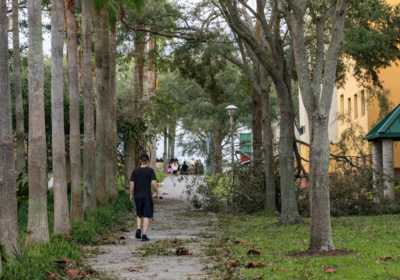OPINION: New screening tool may let trafficking victims slip through the cracks

Human trafficking is undoubtedly an issue across the country, particularly in Florida, which ranks fifth in rates of human trafficking in the nation, as stated in a 2022 report by World Population Review.
The Florida Department of Children and Families (DCF) has implemented a screening tool — known as the Human Trafficking Screening Tool (HTST) — in an attempt to recognize child victims and get them help. Unfortunately, this tool has been proven to be unreliable in catching all cases of human trafficking, and it requires some major adjustments in order to be accurate.
DCF needs to make these adjustments as soon as possible to avoid any more victims falling through the cracks.
The HTST was first used by DCF in 2016. Since then, the Institute for Child Welfare (ICW) has done extensive research into the administration of this tool to attempt to validate it, as reported in the 2022 Annual Report on the Commercial Sexual Exploitation of Children in Florida by the Office of Program Policy Analysis and Government Accountability.
The ICW reported that the HTST was promising, but it was administered so inconsistently that validation was impossible at the time.
This tool consists of a list of questions asked by designated Child Protective Investigators to suspected victims of human trafficking. This can include children with a history of running away, history of sexual abuse or report of possible trafficking by an adult.
The investigators verbally ask the children these questions and record their answers. From there, they determine if the child is involved in human trafficking, as stated in the HTST Administration Guide.
In the ICW’s 2022 report, it found that those who administered the tool were using it as an interview guide and adjusting the wording as they saw fit, which completely threw off the reliability of the data.
This essentially allowed them to determine what did, and did not, meet the requirements to be considered human trafficking and made the results subjective.
In response to these findings, the ICW made some recommendations on how to make the HTST more objective and accurate. These include collecting the information electronically, providing room on the form for follow-up questions and giving additional training to those administering the screening.
Fortunately, the DCF has finally announced they plan to reexamine and revise the HTST, but they have yet to announce when this will be completed.
While this is a step in the right direction, it is something that needs to be done quickly.
Just last Thursday, Hillsborough County Sheriff Chad Chronister announced the arrests of 176 people over the last few months as the result of a human trafficking operation, as reported by ABC Action News.
“Sometimes, this may be someone’s only chance for identification. It’s really important that we get this right if this is the first time they’ve been screened or potentially the only time they’ve been screened for this,” said Dr. Lisa Magruder, who led the research on the effectiveness of the HTST, in an Aug. 29 interview with ABC Action News.
Now that DCF has not only been told that this tool is unreliable, but also been provided with specific recommendations on how to improve it, they need to make it a priority to do so. Waiting any longer than necessary means potentially letting more children fall through because of a tool they know is faulty.
The HTST may be a child’s only opportunity to get the help they need to get out of a horrible situation, and it’s past time this tool is improved and verified so they can have that chance.






